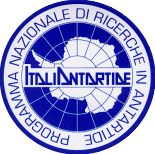Cuatro Romano, Punta
Cuatro Romano, Punta (The name as it would appear in a gazetteer)
Cuatro Romano, Punta (The name as it would appear on a map)
If this information is incorrect, please e-mail mapping@aad.gov.au
Place ID: 12316
Name ID: 105387
Feature type:
Promontory
(8)
Origin
This name originates from Chile.
It is part of the
Chile Gazetteer and the SCAR Composite Gazetteer of Antarctica.
Names that other countries have for this feature:
Narrative
Fue cartografiada por la Expedición Británica de 1934-1937, al mando de John Rymill. El nombre parece haber sido puesto como promontorio Roman Four, montaña Roman figure Four o roca Roman Four, por los miembros de la Base Este de los EE.UU., 1939-1941, en la isla Stonington, y deriva de unas hendiduras llenas de nieve que hay en las laderas de esta punta y que presentan el aspecto de un número cuatro romano. Para aprovechar su condición de nombre descriptivo ha sido traducido por el Instituto Hidrográfico de la Armada de Chile desde 1947 de varias formas. En su forma actual se usa desde 1963. Es un promontorio de piedra de paredes acantiladas, libres de hielo en verano, que se eleva a 828 metros de altura y que cierra a bahía Neny por el SE y la separa del seno Neny, en bahía Margarita, costa occidental de la península Tierra de O'Higgins.
Named For
Location
Latitude:
68° 13' 00.0" S
-68.21667°
Unknown precision
Longitude:
66° 58' 00.0" W
-66.96667°
Unknown precision
Altitude:
Not recorded
Unknown precision
Images
No images of this place could be found.
Map
Source
Source Institution:
Unknown
Source Publisher:
Unknown
Remote sensing:
Not Applicable
Comments
None
Approval status
Related information

